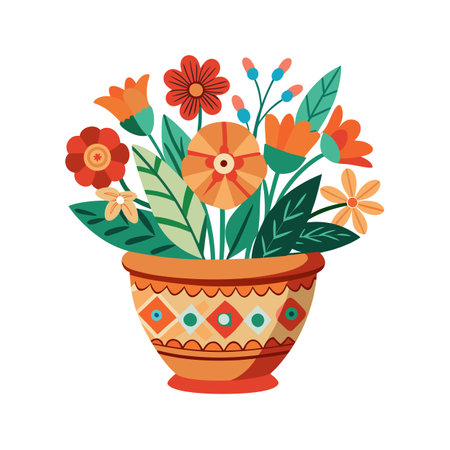Introduction to Sustainable Cut Flower Gardening
In today’s fast-paced American cities and suburbs, our outdoor spaces—no matter how small—offer incredible opportunities to embrace sustainability and beauty. Sustainable cut flower gardening is a mindful approach to growing flowers that are harvested for home décor, gifting, or even small business ventures. Unlike traditional flower gardening, which often relies on synthetic fertilizers, pesticides, and high water usage, sustainable techniques focus on reducing environmental impact while supporting local ecosystems.
For urban dwellers with compact balconies or suburbanites managing petite backyards, the concept of eco-friendly cut flower gardening is both practical and impactful. By adopting organic methods, conserving resources, and choosing regionally appropriate blooms, you can enjoy vibrant bouquets throughout the seasons without contributing to pollution or habitat loss. This approach not only beautifies your personal space but also aligns with the broader movement toward greener urban environments across the United States. In the following sections, we’ll explore essential strategies and actionable tips to help you cultivate stunning flowers while prioritizing environmental responsibility.
2. Choosing Eco-Friendly Flower Varieties
When planning your sustainable cut flower garden, selecting the right flower varieties is key to eco-friendly success—especially in small urban spaces or on compact city balconies. Focusing on native and drought-tolerant species not only supports local ecosystems but also conserves water and requires less chemical intervention. Here’s how you can make thoughtful choices for a greener bouquet that suits different U.S. climates:
Why Choose Native and Drought-Tolerant Flowers?
Native flowers are adapted to local conditions, making them resilient against pests and weather extremes. Drought-tolerant blooms thrive with minimal watering, perfect for eco-conscious gardeners in regions prone to dry spells or for those using container gardens on sunny balconies.
Top Eco-Friendly Cut Flower Options by U.S. Region
| Region | Native Choices | Drought-Tolerant Picks |
|---|---|---|
| Northeast | Black-eyed Susan, New England Aster | Echinacea, Yarrow |
| Southeast | Coreopsis, Blanket Flower | Zinnia, Rudbeckia |
| Midwest | Purple Coneflower, Prairie Blazing Star | Liatris, Sunflower |
| Southwest | Desert Marigold, Penstemon | Cosmos, California Poppy |
| West Coast | Clarkia, Douglas Iris | Lavender, Sea Thrift |
Tips for Urban Gardeners and Small Spaces
– Opt for compact or dwarf cultivars ideal for containers and limited spaces.
– Mix native perennials with annuals to ensure continuous blooms throughout the growing season.
– When shopping at local nurseries or farmer’s markets, look for labels such as “native,” “drought-tolerant,” or “pollinator-friendly.” This helps you support both sustainability and local wildlife.
– Use eco-friendly potting mixes and organic fertilizers to further reduce your environmental footprint.
By carefully choosing flower varieties suited to your specific climate and garden size, you’ll enjoy stunning arrangements while promoting biodiversity and conserving resources—perfect for anyone seeking a stylish yet responsible urban floral retreat.

3. Natural Soil Health and Composting
When it comes to sustainable cut flower gardening, keeping your soil healthy is key—especially in small urban spaces like city balconies or compact patios. Healthy soil supports vibrant blooms and helps your garden thrive without synthetic chemicals. The good news? You don’t need a backyard or a big budget to build rich, living soil right at home.
Composting for City Gardeners
Even in tight quarters, composting is doable and makes a big difference. Try using a small-scale compost bin or even a countertop composter designed for apartments. Collect kitchen scraps like vegetable peels, coffee grounds, and eggshells—just avoid meats and dairy, which can attract pests. Layer these “greens” with dry materials like shredded newspaper or dried leaves. In a few months, you’ll have nutrient-rich compost perfect for pots or balcony planters.
Worm Composting (Vermicomposting)
If space is super limited, vermicomposting is a fantastic option. A simple worm bin fits under the sink or on a balcony corner and turns food waste into “black gold”—a powerful natural fertilizer that cut flowers love. Red wiggler worms do all the work, breaking down organic matter quickly and odor-free.
Natural Fertilizing Methods
Skip synthetic fertilizers and opt for eco-friendly options that suit urban lifestyles. Diluted fish emulsion, seaweed extracts, or homemade compost tea are gentle yet effective ways to nourish your flowers. For those growing in containers, add slow-release organic fertilizers at planting time to give your blooms steady nutrients throughout the season. Remember: Healthy soil means healthier flowers—and a more sustainable city garden.
4. Water Conservation Techniques
Smart water management is essential for sustainable cut flower gardening, especially in urban American environments where every drop counts. By embracing efficient watering strategies, you not only reduce your environmental footprint but also save on utility bills and help ensure resilient blooms throughout the season. Below are practical water-saving methods tailored to the needs of American homeowners:
Drip Irrigation: Targeted Hydration
Drip irrigation is a game-changer for eco-friendly gardeners. Unlike traditional sprinklers that can waste water through evaporation and runoff, drip systems deliver moisture directly to plant roots. This method is ideal for small urban gardens or container setups on balconies, ensuring each flower gets just the right amount of hydration.
Benefits of Drip Irrigation
| Benefit | Description |
|---|---|
| Water Efficiency | Reduces water use by up to 50% compared to overhead watering. |
| Disease Prevention | Keeps foliage dry, minimizing fungal issues common in dense plantings. |
| Time Savings | Automated systems free up your schedule while keeping flowers healthy. |
Rainwater Harvesting: Nature’s Gift
Another sustainable approach is capturing rainwater from rooftops and gutters into barrels or cisterns. In many parts of the U.S., this practice is encouraged or even incentivized. Collected rainwater can be used to irrigate your cut flowers, reducing demand on municipal supplies and lowering your gardens carbon footprint.
Simple Rainwater Collection Steps
- Install a rain barrel beneath a downspout.
- Add a debris screen to keep out leaves and insects.
- Use a soaker hose or watering can for targeted application.
- Check local regulations—some states offer rebates for rainwater systems.
Mulching & Smart Scheduling
Beyond hardware solutions, simple habits like applying organic mulch around your plants help retain soil moisture and suppress weeds. Watering early in the morning or late in the evening also minimizes evaporation—an especially effective tip for hot American summers.
Summary Table: Efficient Watering Techniques at Home
| Technique | Main Advantage |
|---|---|
| Drip Irrigation System | Saves water & time; precise delivery to roots |
| Rainwater Harvesting | Cuts reliance on municipal sources; cost-effective |
| Mulching | Keeps soil moist; reduces weed growth |
| Optimal Timing (AM/PM) | Lowers evaporation loss; maximizes absorption |
Adopting these water conservation techniques not only supports sustainable cut flower gardening but also fits seamlessly with the eco-conscious values present in many American communities today.
5. Organic Pest and Disease Management
When growing cut flowers sustainably, keeping your garden healthy without compromising the environment or your family’s well-being is key. Embracing organic pest and disease management means choosing non-toxic solutions that protect beneficial pollinators like bees and butterflies, which are essential for urban gardens and small balcony spaces.
Identify Before You Treat
Start by identifying which pests or diseases are affecting your flowers. Not all bugs are bad; many, such as ladybugs and lacewings, actually help control harmful insects. Take time to observe before taking action so you don’t accidentally harm these helpful allies.
Natural Solutions for Common Problems
Neem Oil
Neem oil is a popular organic spray that disrupts the life cycle of many common garden pests without hurting pollinators when used correctly. Always apply it in the evening when bees aren’t active to minimize risk.
Soap and Water Spray
A simple mix of mild dish soap and water can be sprayed directly onto aphids, spider mites, and whiteflies. This solution suffocates soft-bodied insects but leaves beneficial bugs unscathed if applied carefully to affected areas only.
Diatomaceous Earth
This fine powder, made from fossilized algae, can be sprinkled around flower stems to deter slugs and crawling insects. It’s safe for pets and people but should be reapplied after rain or watering.
Encourage Natural Predators
Attract birds, predatory insects, and frogs to your urban garden by providing water sources, native plants, and shelter. These natural predators keep pest populations in check organically and add life to your outdoor space.
Preventative Practices
Healthy plants resist pests and diseases more effectively. Rotate flower types each season, avoid overcrowding containers on your balcony, and remove diseased foliage promptly. Composting kitchen scraps into rich organic matter also helps strengthen plant immunity without chemicals.
Safety First
Always read labels when using any product—even natural ones—and store them out of reach of children and pets. By choosing gentle methods and prioritizing biodiversity, you create a safe haven for both your loved ones and local wildlife right on your city balcony or small backyard plot.
6. Harvesting and Extending Vase Life Sustainably
One of the most rewarding aspects of sustainable cut flower gardening is harvesting blooms at their absolute best and ensuring your arrangements stay fresh as long as possible—without compromising eco-friendly values. To begin, always pick flowers early in the morning or late in the evening when temperatures are cooler and plants are well-hydrated. This timing helps preserve both the stem’s moisture content and the vibrancy of your blooms.
Harvesting at Peak Perfection
For a truly American approach, think of harvesting like picking homegrown tomatoes—timing is everything. Cut flowers just as buds begin to open, not fully bloomed, for maximum vase life. Use sharp, clean pruners or garden scissors to minimize damage and prevent disease spread. For continual blooming throughout the season, regularly deadhead spent flowers and only take what you need, leaving plenty for pollinators and future enjoyment.
Eco-Friendly Vase Solutions
Avoid commercial flower preservatives that often contain unnecessary chemicals. Instead, opt for DIY solutions using common household items: add a teaspoon of sugar (energy for the stems) and a splash of white vinegar (to inhibit bacteria) to your vase water. Change water daily, rinse stems, and trim the ends at an angle every couple of days to ensure optimal hydration and reduce waste.
Green Arranging Tips for Urban Spaces
If you’re arranging flowers on a city balcony or in a small kitchen nook, skip floral foam—it’s not biodegradable. Secure stems with reusable wire mesh or simply tie bunches together with compostable twine. Display your arrangement out of direct sunlight and away from heating vents to slow wilting naturally.
Sustainable harvesting and care practices let you enjoy beautiful, long-lasting bouquets while keeping your environmental impact low—a win for both urban gardeners and our planet.
7. Building Community and Sharing Blooms
One of the most rewarding aspects of sustainable cut flower gardening is the opportunity to connect with your community. Sharing the beauty and joy of your blooms not only brightens someone’s day but also spreads awareness about eco-friendly practices. Consider donating surplus flowers to local hospitals, nursing homes, or community centers—your homegrown bouquets can make a meaningful difference in someone’s life while reducing floral waste.
Flower swaps are another fantastic way to build relationships with fellow gardeners and diversify your own collection without purchasing new plants. Host a neighborhood flower exchange, where you can trade stems, seeds, or even gardening tips. It’s a simple yet effective method to foster sustainability and creativity in your local area.
Don’t forget about joining or forming local gardening groups. Many American cities have vibrant community garden networks, horticultural clubs, or social media groups dedicated to urban gardening. Participating in these groups provides opportunities for shared learning, resource pooling, and collaborative projects like pollinator gardens or composting initiatives.
By donating, swapping, and networking, you help create a culture of sustainability that extends beyond your own backyard. These connections not only enhance your gardening journey but also contribute to a greener, more resilient urban environment for everyone.


